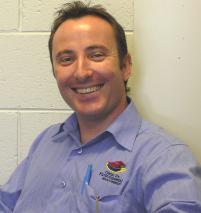Dr Bunce leads sawfish recovery efforts
Published on 13 March, 2008
Dr Ashley Bunce a researcher with CQU's Centre for Environmental Management - with funding from the Burnett Mary Regional Group for Natural Resource Management - is currently developing a management plan to help recover populations of the green sawfish in Central Queensland.
Dr Bunce has a leading role among scientists appealing for information from the community on the endangered green sawfish under plans to recover populations of this unusual creature. There's a photo of the green sawfish at:
http://www.elasmodiver.com/Green_Sawfish.htm

Anyone with information about the green sawfish can contact CQU's Dr Ashley Bunce by calling (07) 4970 7285 or sending an email to a.bunce@cqu.edu.au
Knowledge of the species is so sketchy, including information on where it occurs, it is hampering recovery efforts.
Although green sawfish almost certainly occupied estuaries and inshore waters in the region in the past no formal records exist. There have been unconfirmed reports of sightings of green sawfish in the region as recently as 2004.
Details that will help the recovery process include location and time of the capture or sighting, size of the sawfish (approximate length) and a description, and whether it was alive or dead.
The green sawfish has also been identified as a ‘high' priority species for conservation management work in Queensland under the Environmental Protection Agency's ‘Back on Track - species prioritisation framework'. Work is now underway with Natural Resource Management groups and researchers to make people aware of the plight of the sawfish species and take action to address threats.
Sawfish are modified rays which have shark-like bodies and are distinguished by a flattened head and a narrow blade-like snout armed with 24-28 pairs of lateral teeth.
The green sawfish can grow up to 7m in length and has an estimated lifespan of 20 to 30 years. Sawfish give birth to live young with litter sizes of up to 20 pups, which are approximately half a metre in length at birth. Young sawfish are born with flexible snouts, covered in a protective gel-like covering to prevent injury to the mother.
Sawfish generally live in freshwater, estuarine and marine waters, with a preference for coastal bays and foreshores. The green sawfish uses its saw to feed, stunning slow-moving shoaling fish, such as mullet, by striking rapidly from side to side or by dislodging and locating molluscs and small crustaceans by raking through sand and mud.
The green sawfish has suffered severe population declines throughout its former range in the past 30 years and faces ongoing threats from accidental capture in fishing nets, from illegal fishing for fins and rostrums - the distinctive saw-toothed snouts which are often kept for curiosity value or decoration - and from habitat degradation through coastal development. The green sawfish which was common along the east coast of Australia, and found as far south as Jervis Bay, is now rarely found south of Cairns.
The plight of the green sawfish is currently being highlighted during Sea Week 2008 ‘Extinction - a Saw point' (March 2-8) and the recent listing of the green sawfish as vulnerable under federal environmental laws, making it illegal to kill, harm or take green sawfish in Commonwealth waters.
To find how to help release our threatened sharks and rays if you inadvertently capture one refer to http://www.epa.qld.gov.au/publications/p02176aa.pdf/Releasing_sharks_rays_and_sawfish.pdf
To find out more about Sea Week 2008 visit http://www.mesa.edu.au/seaweek2008/

